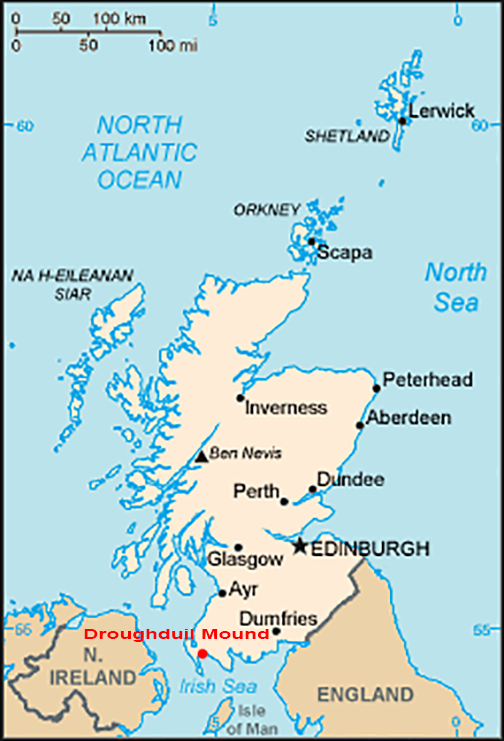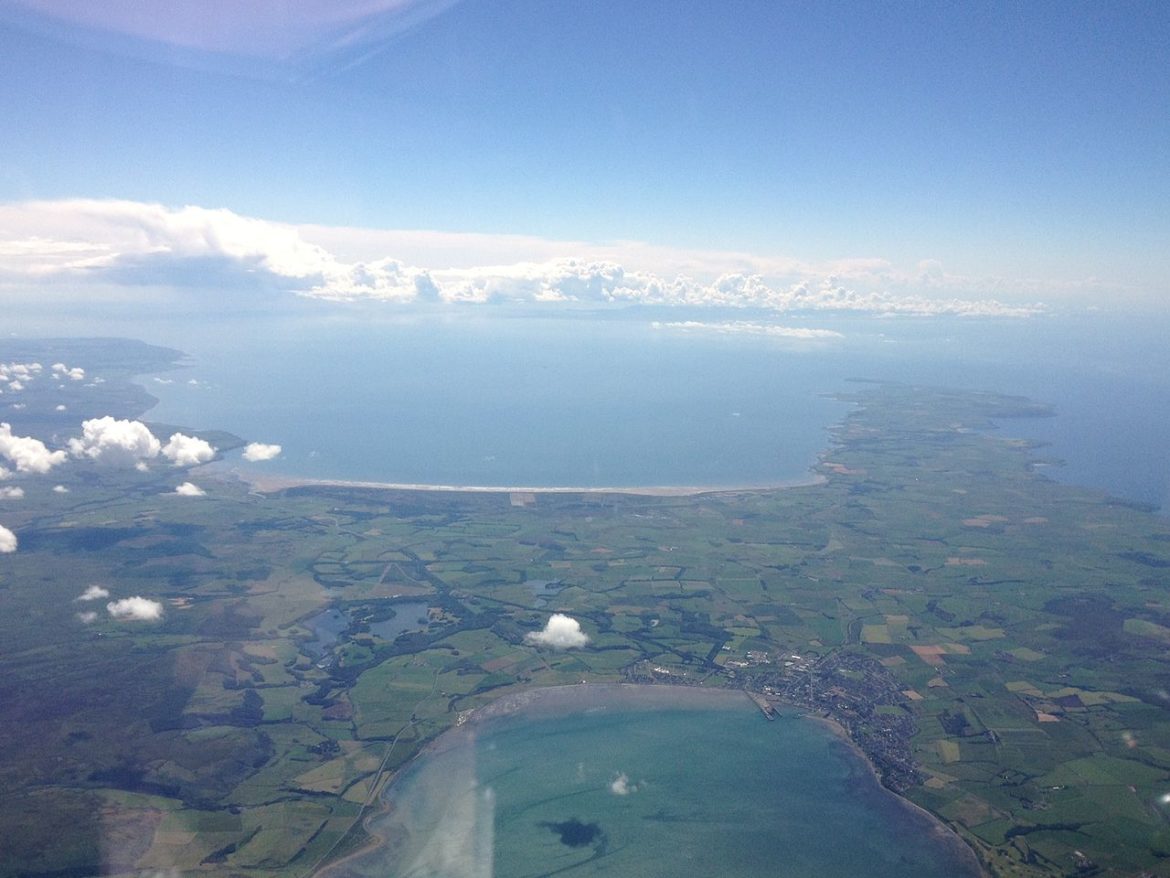DUMFRIES AND GALLOWAY, Scotland – We have reported previously on hopes that road construction relating to the Stonehenge bypass will reveal new features of the landscape. Construction projects can be a mixed blessing for archaeologists, revealing as much as they may destroy, and this has been shown with reports of discoveries in South West Scotland after work on the A75 Dunragit by-pass near Stranraer in Dumfries and Galloway.
Archaeologists working on the site – a process which began in 2012 – have uncovered what they believe to be a ceremonial site on the scale of the Ness of Brodgar in Orkney or even Salisbury Plain. The site spans over 2km and in terms of time, spans 8000 years. It has been referred to as ‘the Prehistoric Heart of Galloway’ and archaeologists say that it has given rise to some of the most significant discoveries in Scotland in recent decades.
A range of post holes run up to an artificial hill, Droughduil Mound, overlooking Luce Bay. GUARD, the private archaeological team working on the post-excavation, have reinforced an earlier suggestion by Manchester University that this may form a cursus monument (a series of banks or ditches). Three concentric rings of wooden posts also stood here.
Dr Kenny Brophy, senior lecturer in archaeology at Glasgow University, says that “Dunragit is a significant location, likely a pre-eminent ceremonial power centre in the Neolithic period of Britain and Ireland. The evidence suggests this power was not related to isolation (the perceived remoteness of this place today from major population centres is misleading), but rather from connections to both the remainder of northern Britain, but also the so-called Irish Sea zone.”

Scotland Map with Droughduil Mound [Public Domain]
He also notes that the area is crossed with routes leading to the monument, suggesting that this was a destination for many people.
Some significant finds have already been made at the site, including a 167-piece jet necklace which the team believe to date from around 2000 B.C.E., items of Beaker ware pottery, and thousands of flint tools: there is evidence of a sizable flint knapping operation here. It is likely that the jet was sourced at Whitby – still associated with the town. Illustrations of the restrung piece show that it was not a simple set of beads but a complex, sophisticated item of jewellery.
The site of a house has also been discovered and dates to around 6800 B.C.E., though the entire site is estimated to have been is use for 9,000 years: it is situated on an estuary that no longer exists and is the earliest house discovered in South West Scotland. It is close to a hearth, which is even earlier, dating from around 1000 years before the house – shortly after people arrived back in Britain after the Ice Age. Historians have suggested that the settlement may have arisen due to the abundance of fish and shellfish in this coastal region. Two more recent cemeteries, dating from the Bronze Age, are also nearby. Throughout the ages, the site reflects both domestic and industrial structures, with finds of furnace sites and metalworking later on in the Iron Age. Unusually, this Iron Age settlement was unenclosed and located on low-lying ground – rather than being, for example, in the form of a hillfort – which suggests that those who lived here did not do so in anticipation of attack, and there is no evidence that they were, although the settlement also seems to have been occupied in Roman times and a Roman road runs nearby.

Aerial view across the eastern part on Loch Ryan, over Stranraer and into Luce Bay. Photo Credit: Harvey Milligan CC BY-SA 4.0]
It is thus evident that this is a place that has been inhabited for thousands of years – perhaps not continuously but certainly regularly, and the continuing work on the excavation finds is likely to reveal new information about prehistoric Scotland from the Mesolithic to the Iron Age and beyond.
As with other ancient sites, this region may have been occupied seasonally and not all year round: the terrain has not always been suitable for sustained agriculture. Hazelnuts were evidently a big seasonal crop here. Evidence of ritual activity here mainly dates from the Bronze Age, and the scale of the cemeteries suggests significant funerary rites: people were cremated and their ashes buried in urns, sometimes with more than one set of remains in a single pot.
Archaeologists are talking about the site as indicative of the importance of Galloway in the world of ancient Britain. Ireland and the Isle of Man are both visible from the region, the area is directly on western sea routes, and it is also possible to speculate that if Orkney, as suggested elsewhere, was a powerhouse of religious and ritual activity, influencing the rest of the country southwards, then the finds at Dunragit may be related. As Dr. Brophy notes above, the location may seem remote in terms of land, but it is critical when considering some of these ancient sites to note their position in relation to ancient sea routes – the main form of transport in these times would have been by boat.
Orkney itself continues to reveal more about life in the Iron Age and before, with a recent discovery of a vast and ancient shellfish feast site. Galloway, too, has a number of ancient sites: hillforts, standing stones and chambered tombs among them, and the ongoing discoveries at Dunragit will add to our understanding of prehistory in this part of South West Scotland.
The Wild Hunt is not responsible for links to external content.
To join a conversation on this post:
Visit our The Wild Hunt subreddit! Point your favorite browser to https://www.reddit.com/r/The_Wild_Hunt_News/, then click “JOIN”. Make sure to click the bell, too, to be notified of new articles posted to our subreddit.
